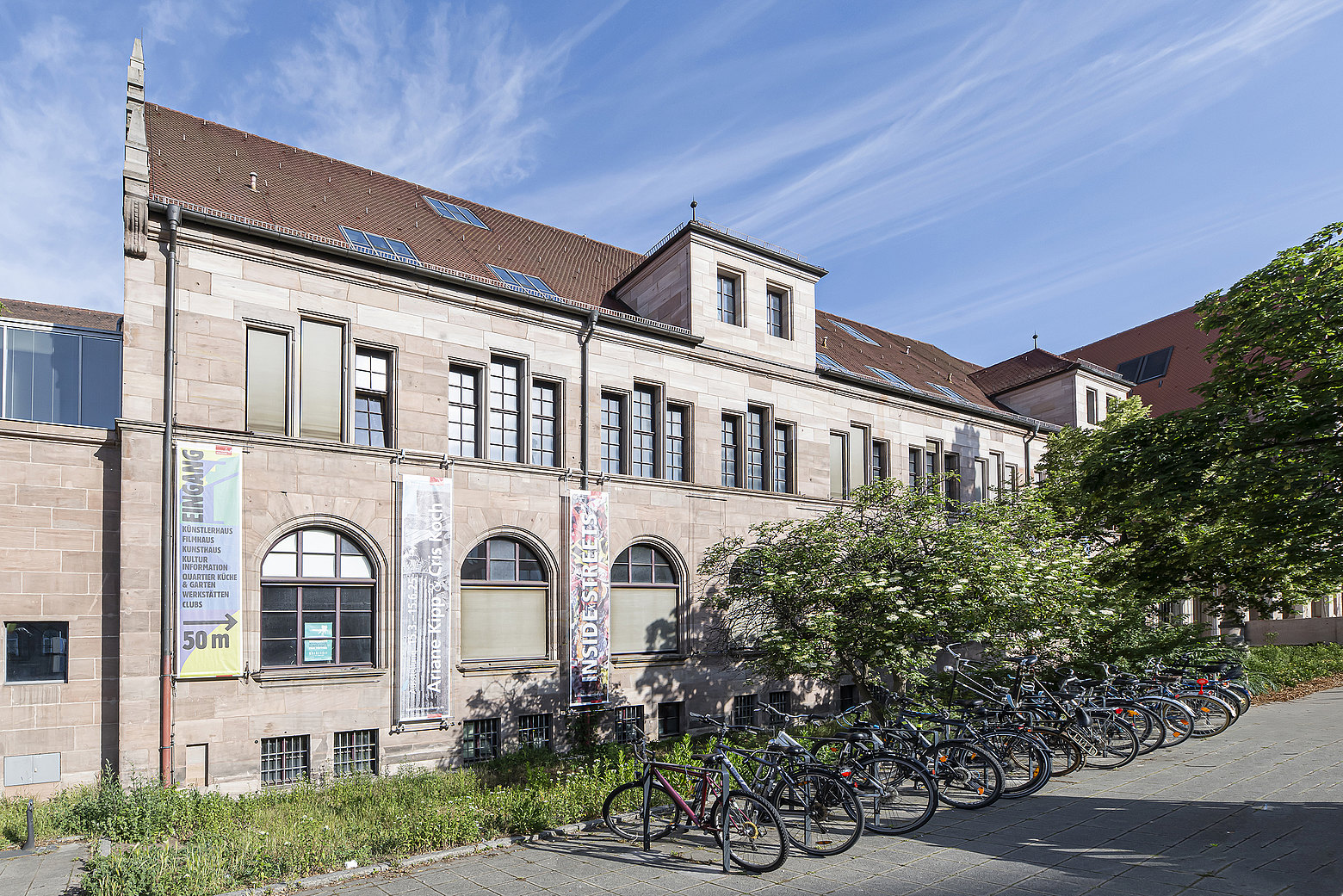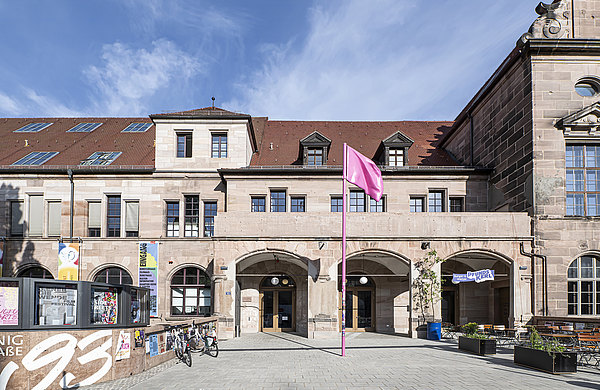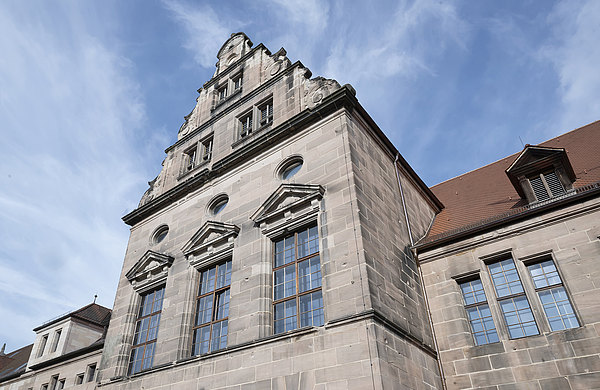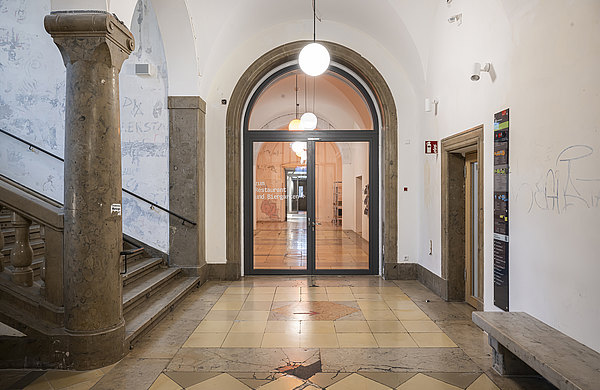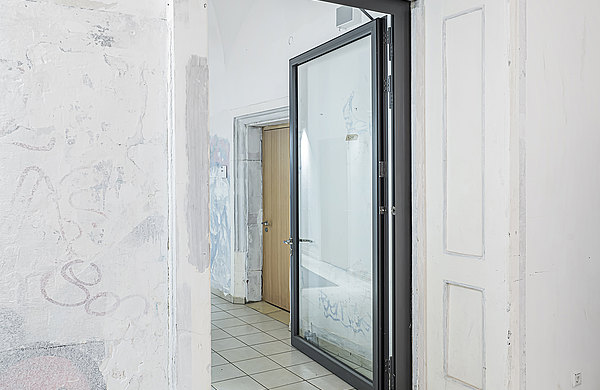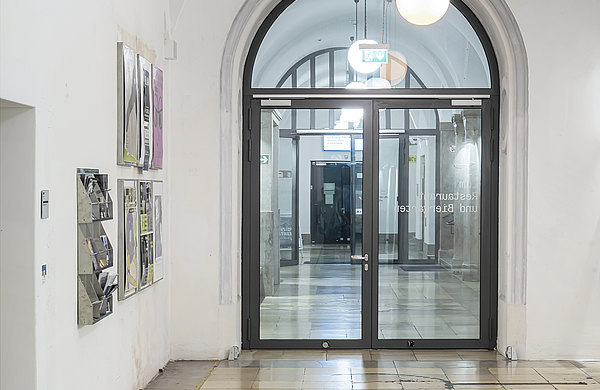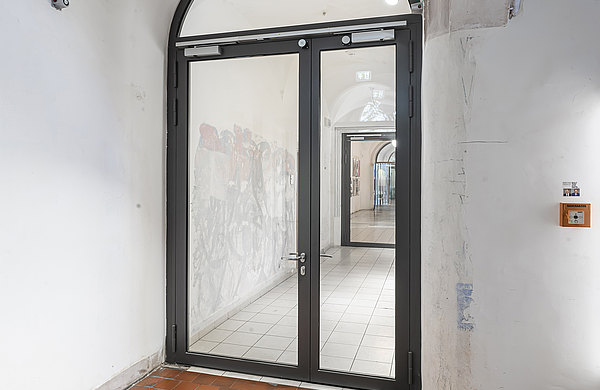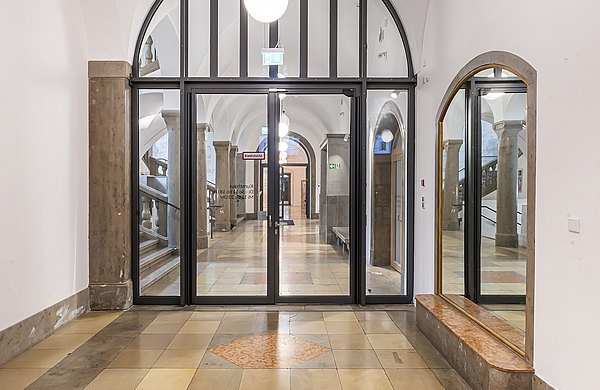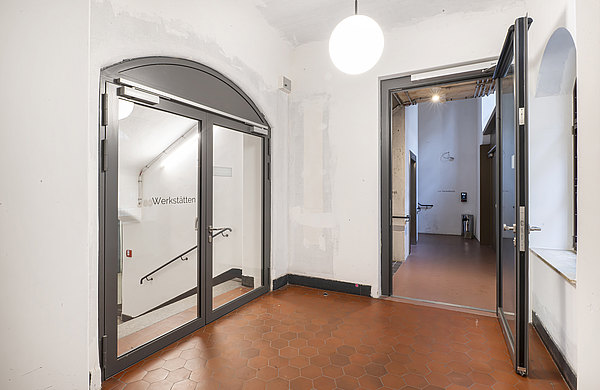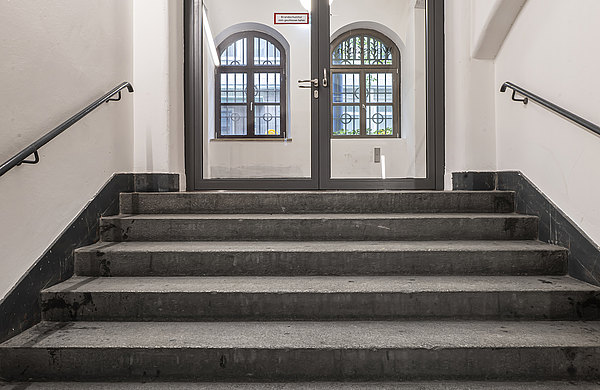Renovation of the Künstlerhaus Nuremberg
Careful changes to a listed cultural building
In 1910, the Künstlerhaus was built on parts of the historic city wall of Nuremberg. While the southern part had already been extensively renovated around 2000 to fix damage from the war, with the front section being constructed at the same time, the undamaged northern part remained true to its varied use until just a few years ago. From 2019, the Munich-based firm Florian Nagler Architekten took on the general renovation of this third construction section. Its subtle, almost imperceptible changes are now leading the building into a new era in its eventful history. Fire protection elements from Forster Profile Systems play a role in this and bring together precisely this combination of historical charm and modern functionality.
The Künstlerhaus at Königstor is an important part of cultural and social life in Nuremberg. It offers space for exhibitions and concerts, for conferences, cinema, workshops and gastronomy. At the same time, the institution acts as a framework for civic initiatives, as a laboratory for creative industries and as a place to meet and discuss topics.
Sensitive handling of the existing building
Starting in 2019, the listed building was modernised on behalf of the Nuremberg Hochbauamt (Building Authority). The main task was to adapt the building to meet today’s standards in terms of technology, building regulations and construction. At the same time, the interior was upgraded functionally, with, for example, rooms used for similarly noisy purposes clustered together and the room configuration to be reorganised. While some of the old layers and traces of the past were deliberately kept on view, some areas were designed from scratch. These include, for example, the altered entrance, a tower annexe as a gable in front of the north facade and additions to the works yard. Thanks to careful changes to the fabric of the building and the sensitive addition of new elements, the original character of the building is retained throughout. At the same time, the technical and functional improvements represent significant added value for future use.
Filigree design in harmony with the preservation of a listed building
The structural fire protection requirements necessitated fire and smoke protection doors to be installed in the area of the stairwells, corridors and in the basement. These should integrate as inconspicuously as possible into the existing structure, have slim profiles and use as little material as possible. The elements made of coated steel and glass are also designed in accordance with the specifications of the listed building. The anthracite-coloured tubular frame doors follow the geometric specifications from the existing building and are individually adapted to the shape of the vaulted ceilings or the room heights.
Room-specific versions of the fire protection elements
A total of ten project-specific elements based on the forster fuego light door series ensure fire protection in the refurbished Künstlerhaus Nuremberg. For example, double-leaf doors are installed to the prestigious staircase in the entrance area, which are topped off with special fanlights in a basket-handle arch shape. The historical style is reflected in a fire-resistant door with fixed glazing in the symmetrical sidelights and with striking vertical transoms in the arch. Other versions, for example with segmental or round arches, particularly high ceiling connections or straight lintels, can be found at the transitions to corridors, stairwells and in the basement. Fire protection regulations range from T30 RS fire-retardant doors to T90 RS fire-resistant doors. Individual approvals were required in three cases due to the overall height being exceeded, the height of the T90 leaves, the permissible size of the fanlight filling and the special connections in the existing building. Box profiles are installed above the actual elements, which ensure static support and skilfully create the transition to the special existing architecture. Bearing witness to more than 100 years of eventful contemporary history, the outdated structure of the northern part of the building has been sensitively renovated to once again meet today’s requirements.
Nuremberg, Germany
Products:
Forster fuego light T30 and T90 fire and smoke protection doors
Architecture: Florian Nagler Architekten, Munich, Germany
Metal construction: MAB Metall- und Anlagenbau GmbH, Wittenförden (DE), Hüther Objekttüren GmbH, Hedemünden (DE)
Client: Hochbauamt (Building Authority) of the City of Nuremberg
Photography: Uwe Mühlhäußer

